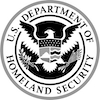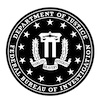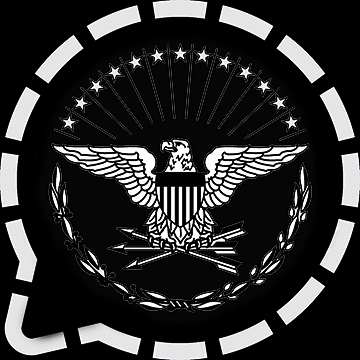Congress Debates Technology Regulation After Discovering Internet Not Actually Series of Tubes
 Photo: Unknown
Photo: Unknown
In a groundbreaking revelation, U.S. lawmakers were thrown into tumultuous disarray this week after the startling discovery that the internet is not, as previously believed, a literal series of tubes. It is a revelation that has sent shockwaves through the hallowed halls of Capitol Hill, inciting impassioned debates about technology regulation.
The revelation occurred during a Joint Session of Congress, wherein an intern from Silicon Valley, tasked with explaining the modern marvel that is the internet, accidentally shattered the long-standing belief held by many senior legislators. The intern eloquently explained that the internet is not a physical infrastructure of interconnected pipes but a virtual network of information, a concept that was met with gasps and frantic note-taking.
Congressman Harold P. Dewey, a staunch advocate of the “tubular internet” theory, voiced his dismay, “I just simply can’t comprehend this. I mean, all these years, I was under the impression that emails were transported through these tubes, much like our postal service. Now you’re telling me it’s all air and signals? This is preposterous, I would rather believe in Santa Claus!” Dewey’s sentiment was echoed across the chamber, with many members expressing their disbelief and concern over this newly presented model of the internet.

The subsequent uproar has led to the proposal of numerous legislative measures aimed at establishing stricter regulations on this seemingly abstract entity. While the specifics are still under development, it is believed that these regulations will focus on the monitoring and control of data transmission, the establishment of “internet standards”, and mandatory training for congress members to comprehend this brave new world of ‘signals and air’.
I just simply can't comprehend this. I mean, all these years, I was under the impression that emails were transported through these tubes, much like our postal service.
Even more pressing is the debate of whether or not the current IT infrastructure of the nation is capable of supporting this non-tubular version of the internet. “The very fundamentals of our understanding of this technology have been upended,” stated Senator Prudence G. Harkness. “We must reassess our current legislative approach and infrastructure to adapt to this startling new reality.”

As Congress grapples with these new revelations, the public eagerly awaits the outcomes of this debate. Will the newfound understanding of the internet lead to tighter regulations and standards, or will it open up a new era of technological freedom? As the dust settles, it has become clear that the road ahead is fraught with uncertainty and challenges, and the next chapter of this saga is set to commence. What will the ‘Internet: Not Tubes Edition’ entail? Only time will tell.
In response to the chaos, a special Congressional task force is being assembled to further explore the complexities of this “non-tubular internet.” The task force, comprised of fresh-faced interns from Silicon Valley and a handful of tech-savvy legislators, will be responsible for simplifying the intricacies of the digital realm for the predominantly non-tech members of Congress.
One of the youngest legislators, Congresswoman Anna P. Shakes, a former software engineer and an advocate of adapting technological advancements, emphasized the urgent need for this task force. “We are in the 21st century,” she stated forcefully. “The fact that we are just now learning that the internet is anything but a series of tubes illustrates how crucial it is for Congress to comprehend the complexities of our digital world. We need to understand the internet in its entirety, not simply as an enigma of tubes and pipes.”

"The very fundamentals of our understanding of this technology have been upended," stated Senator Prudence G.
To add to the confusion, some congress members have suggested investing in large, physical tubes to maintain the previous understanding of the internet. However, these suggestions were quickly dismissed by the task force.
In an attempt to address the fear and anxiety rippling through Congress, an ‘Introduction to the Internet’ workshop is being planned. It aims to equip our nation’s lawmakers with a rudimentary understanding of the internet, from how it functions to the difference between Wi-Fi and Ethernet. Despite the initial shock, many legislators have shown a strong commitment to learning, eagerly enrolling in the workshop.

Yet, the public reaction to these developments has been a mix of amusement and concern. Some are questioning the capabilities of their leaders to govern in an increasingly digital world. Others, however, are more sympathetic, acknowledging the steep learning curve that comes with understanding the internet.
Nevertheless, the discovery has highlighted a glaring gap in Congress’s understanding of the digital world. In an era where the internet permeates every aspect of life, this revelation serves as a wake-up call for lawmakers to familiarize themselves with the workings of the internet, or risk being left behind in a world that continues to evolve and innovate at an unprecedented pace.
As the digital day of reckoning dawns on Capitol Hill, the nation watches with bated breath. Will the internet remain a mysterious realm of “signals and air” or will Congress finally upgrade their understanding from ‘Internet: Tubes Edition’ to ‘Internet: Digital Network Edition’?

As the task force grapples with explaining the complexities of the internet to their colleagues and the workshops get underway, the future of the internet in the hands of Congress remains in the balance. The only certainty in this tumultuous time is that the internet – whether perceived as a series of tubes or a digital network – will continue to redefine our world in ways we are yet to imagine.






